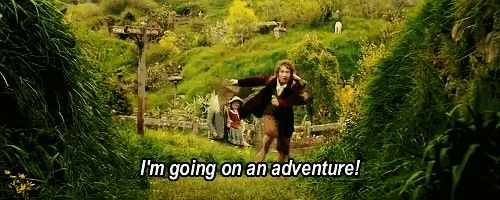Changing the Game

It started with an argument.
A few actually.
Not too long ago in Canada (The Great White North): There I was, knee deep in production schedules, forecasts, casting descriptions, and drafting scripts for a few video games in my role as VP of a gaming studio. We’d just launched a game the night before. And post-launch we would usually be celebrating.

We weren’t.
The then CEO was hitting refresh on some new-fangled analytics dashboard that promised answers. Wiping sweat from his brow as he went.
My co-founder and at the time CTO Matt Pichette was there. Recognizable to most by his lumberjack form, large beard and sarcasm. We were all engaged in a heated debate, a relative regularity for us. (But fear not, in true Canadian fashion, it was done with stereotypical politeness.)
The studio had expanded to 44 people, space was limited so Matt and I shared an 8 by 10 office for months. The air was stale after a week of near to all-nighters. I had a spare set of clothes tucked in a folder drawer. The air conditioner wasn’t working. Matt had emergency pepperoni, some having become malodorous in the heat.
That day, three people were crammed at one desk, and realized with absolute clarity: Shipping a game wasn’t what it used to be.
We were either in an industry on the verge of greatness or abysmal collapse. But who can tell if you’re about to take off or crash when you’re dangling over the precipice?
Our studio had made their name off adventure games, marketed directly to women between the ages of 35–50. These were short and sweet console offerings, or one-hour trial games with lots of story!
If you’re not in the industry then this means little to you: But effectively games used to be made like coasters, completed and shipped with predictable marketing budgets and a comprehensible ROI. The price of the game was set.
Mobile free to play had emerged as the new model, the result of market economics, cheap devices, and as a reaction to piracy.
Free to play meant that while games were free, the fun parts weren’t. It required larger teams, analysts, pricing specialists, server side expertise, and longer testing phases throughout. Post-launch support of content could go on for months on end, potentially even years. Gaming had become a service industry.
Guessing at user spend and testing price points on virtual goods became the focus. Innovative content? Story? Effectively a secondary consideration.
A saying around the office and at industry conferences was: “Make it easy and intuitive enough that a 4 year old could play.”
The winners in the new world boasted of their successes. Some even IPOed.
Play for free they said! The potential is limitless! No one can steal a service, get your content to the masses!

For many this change resulted in chaos, lower quality games, and struggles to get users.
So marketing costs sky rocketed. Designs changed, focusing on “fun pain” and ways to coerce or cajole a player into spending money. Some games had as many as $40,000 in opportunities to spend if played consistently for a year!
But we weren’t doing so well. Ten years of consistent hits in the old markets and now this.
Post launch, our data looked sour. A 2% conversion rate? But that dear friend, it seemed was average.
For the winners, things were great. Heck, it’s a $22 billion dollar market! User costs skyrocketing? That’s fine for brand-led titles or large networks, though the indies with few exceptions struggled.
Soon enough, my beloved business composed of beatnik artists, genius engineers and creatives was starting to look a helluva lot like a mafia-run casino.

Games started to look the same, they’d lost their uniqueness. Creative risk was sacrificed. Cookie cutter approaches, what we call in the industry “cloning” of game mechanics that already worked were preferred over taking chances. And the tone at fan conferences had changed, a general sense of alienation pervaded. Sure, they were playing the games, but without the same sense of joy.
I worried: How could creatives make content in this environment? How could we look at users like players again?
To add insult to injury, directly marketing or creating games for kids seemed less profitable. Developers wanted for the most part to list their games for everyone!
But kids have real buying power, and so they played and so they spent….
Then the rebate requests started coming in, a lot from kids overspending. Parents were pissed. The few loyal customers we may have had were lost because they spent ridiculous sums in the thousands by accident, without comprehension or just because.
And Apple sent rebates to 23 million people.
Matt, having earlier that day witnessed his nieces having a veritable meltdown over a game on their iPad, was simply losing it. His normal eloquence abandoned.
Formerly a lottery systems architect, something wasn’t sitting right with him. He’d left the gambling industry for video games, and didn’t like the idea of literally taking candies from babies. And as a passionate advocate for great content, I too wondered how the industry could survive with legislators vocally questioning the industry and class action lawsuits forming.

And then, as a player, it happened to me.
Picture if you will a SINK (single-income-no-kids), doing some late night research after a few too many glasses of wine hitting that buy button one too many times and realizing with shock that she’d spent more than $80 on a GAME THAT SHALL NOT BE NAMED.
To be clear, I’d spent money before. Roughly, $2.99 here and there on a pretty regular basis, but $80? I uninstalled the game, and mopped at my lack of self-control. A player lost forever I realized. I didn’t ask for a rebate. I just stopped playing.
How many other people stopped playing? How many other kids were being denied the experience of playing a great game because they’d overspent or because their parents were afraid of their device? How many great games could have been made that weren’t because gaming studios just couldn’t figure out how to market to kids?
Games are great. They’re good for the soul. They’d always played a role in my life. Like books, some are better than others no doubt. But as a child who had been bullied, they formed an escape bubble for me. A way to soothe, to face challenges, to overcome as the hero, to persist, to try — the values of which I would later apply to grander IRL (in real life) adventures.
That day we left the office without a resolution. But we knew there had to be a way for content creators to get paid, and for players to play safely while being treated well.
A few beers, a few hours, and a napkin.
It was nuts. It was crazy. We agreed to discuss it in a few weeks. But it was an idea that wouldn’t leave, like a loose tooth constantly begging attention.
What if we helped gaming studios understand the pricing sensitivity of their customers? What if we enabled better relationships between players and gaming studios? What if we gave players and parents the ability to manage, to control, to understand their consumption?
We started asking questions. We grabbed a clipboard and hit the Canadian Tire, Toy’s R Us, and yes, dear friends, a Bridal Gala. We listened to stories about families falling apart, about the anxiety, doom and uncertainty created by games and mobile devices.
Fear is never a good motivator for behaviour.
We called gaming studios, producers and analysts. We listened to the struggles of finding a player, getting them to play and stay in game. We listened to the stress and impact on creativity when burdened by the complete unknown of predicting player behaviour and spend.
That’s when we knew that we could be of use. That we could actually make things better.
Which at the end of the day is the only reason to do anything at all.

Matt and I had been friends for what seems (feels) like eons. We met on a patio. He had just returned from New York and was languishing in a pub with a beer and a pizza slice. He looked lonely. (He maintains he wasn’t and that I am a bit off-kilter).
After ambushing this poor introvert who was quietly musing about his first day back home from the Big Apple, I announced that we were going to be friends. We proceeded to argue about politics and religion.
It was an auspicious beginning, and to his shock no doubt we are still to this day each other’s biggest fans and worst critics. We have survived working together and the hurdles of a start up.
But the bigger $64,000 question you might ask: Who are we to fix a mega-industry that is bigger than music and movies?
Games as a whole represent more than $100 billion, and the market shift to free to play pricing was spreading and will we predict soon be an aspect of all entertainment.
I’ll tell you who we are:
We’re two badass ne’er do wells from the middle of nowhere.
We’re the kids that put ourselves through school while working full time.
We’ve slept in airports and one memorable night in an industrial shipyard in Seattle in order to attend a conference.
We’ve put in our own money and time towards creating and iterating for the market.
We’re the guys that do what we say we’re going to do.
We’re salt of the earth types from a region know best for trees and politeness, but with digital savvy. We believe altruism and profit are not mutually exclusive.
We’re the types that raise capital in snow storms in a state that has fewer people than the city of San Francisco. Alright, it wasn’t not a lot, but it was enough.
We’re lean and mean, and launched a prototype while convincing two game studios to be our guinea pigs.
Eureka. It worked.
We like our whiskey neat, our talk frank and our work hard.
We believe in this:
Solve the social problem, solve the business problem.
We’re here to put players back in the game. We’re here to shake up the gaming industry. We want to help gaming studios access their players, and improve content for kids. We want to remove that dinner table argument over the tablet and create an environment where parents have the tools they need to feel confident about play.
We’re about to shake things up.
Change the game.


